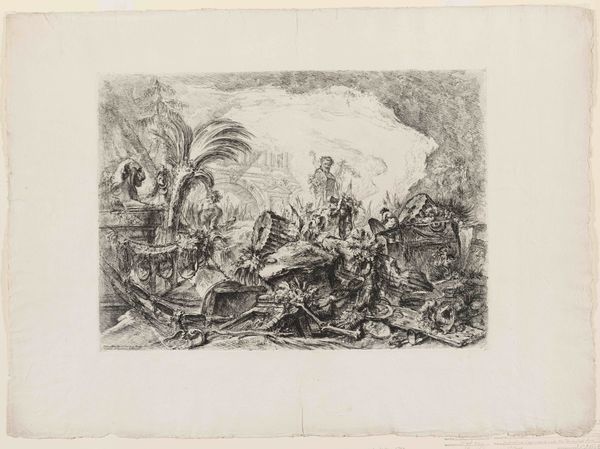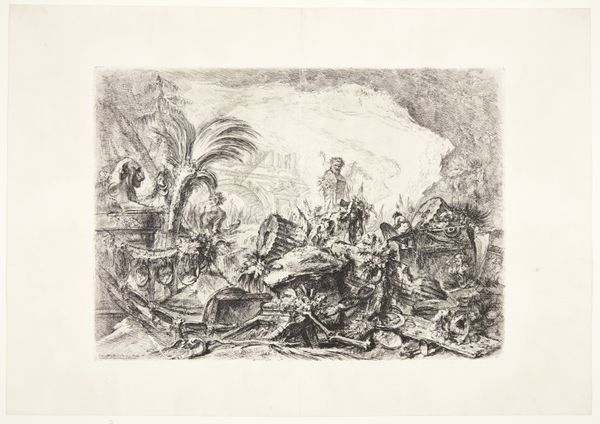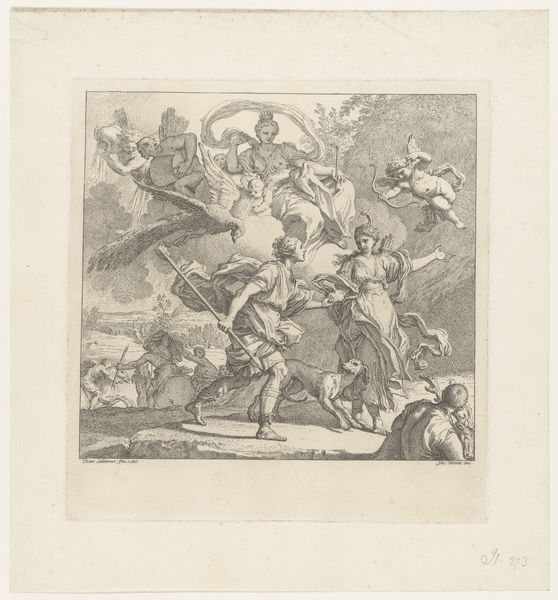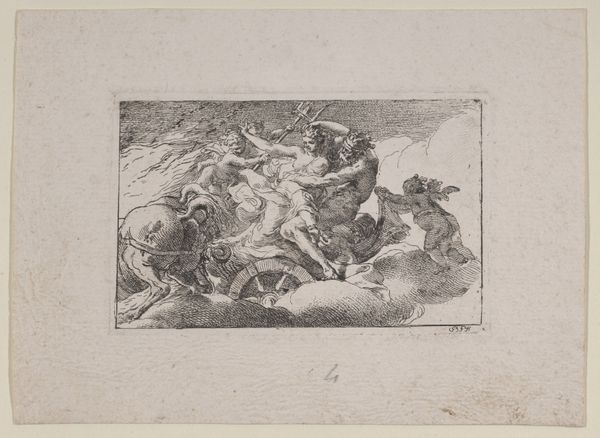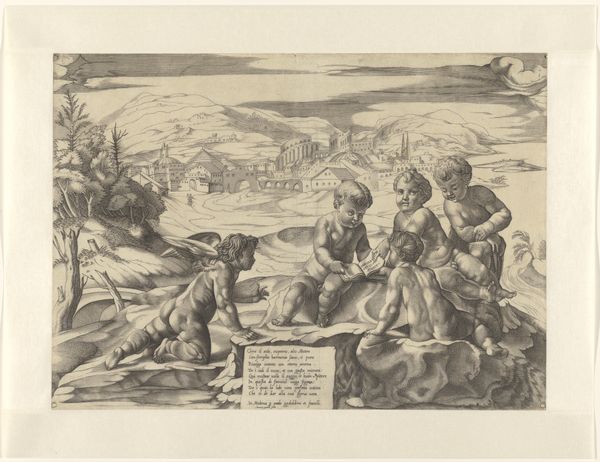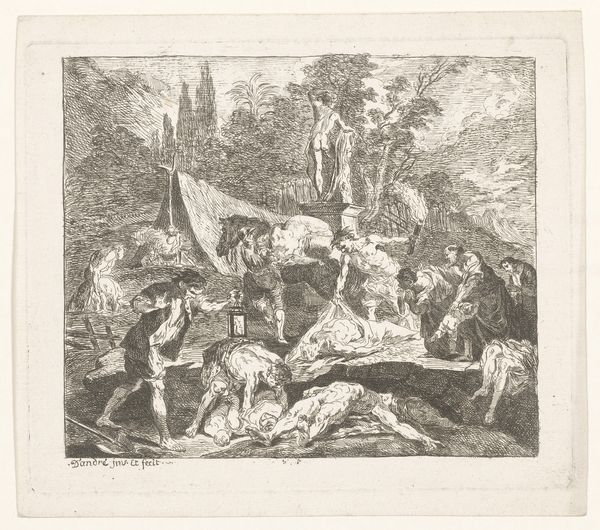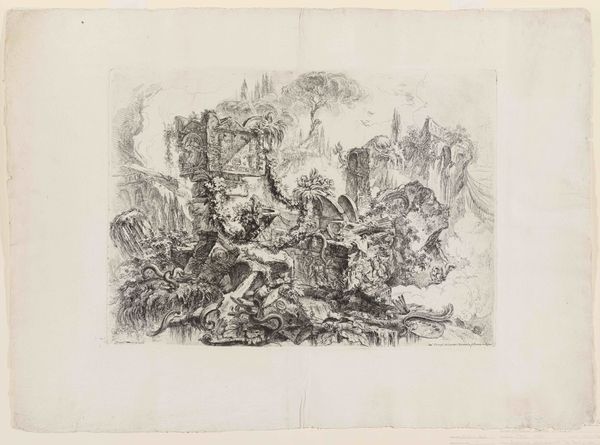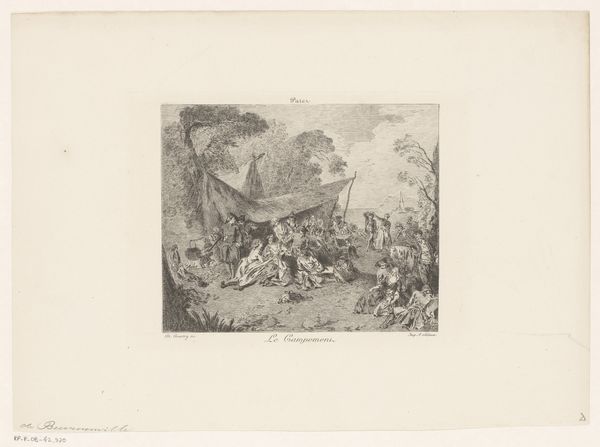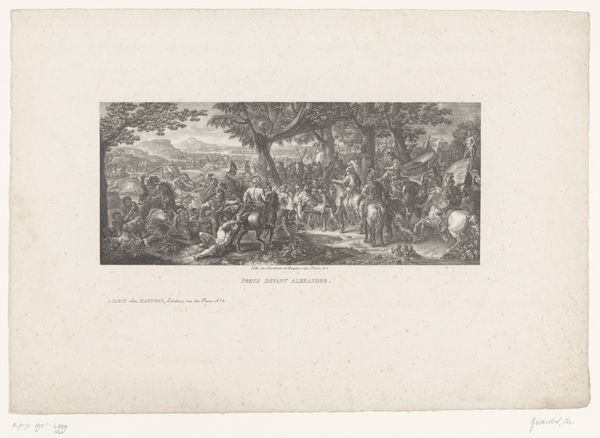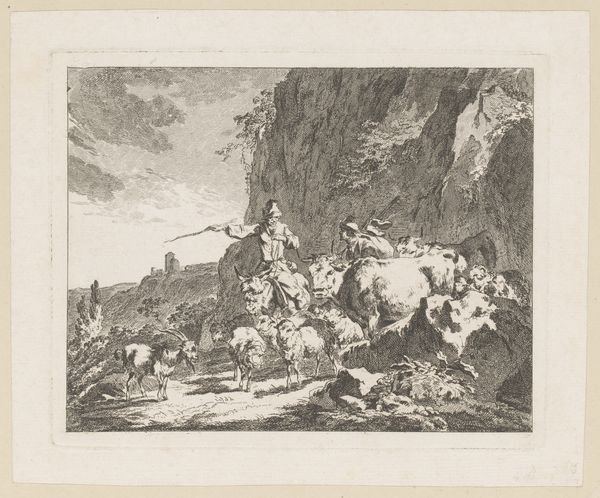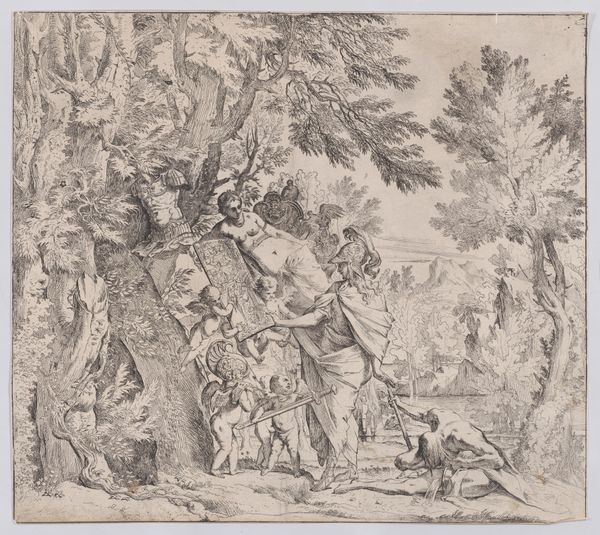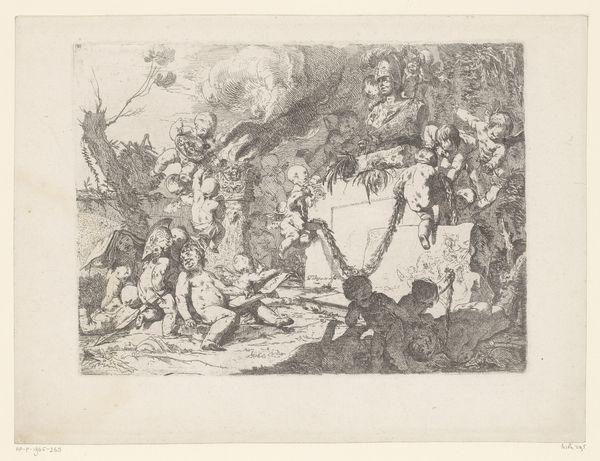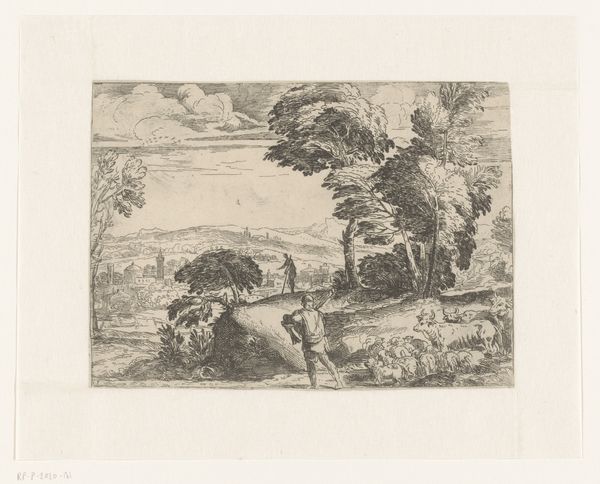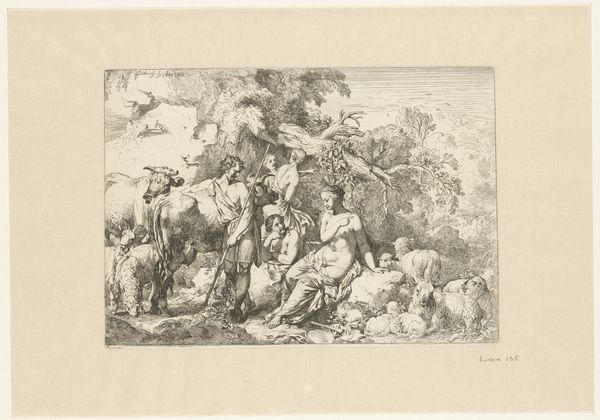
Decorative Capriccio with Skeletons before 1750
0:00
0:00
print, etching
#
toned paper
#
light pencil work
#
ink painting
# print
#
pen sketch
#
etching
#
pencil sketch
#
ink drawing experimentation
#
pen-ink sketch
#
watercolour illustration
#
italy
#
pencil art
#
watercolor
Dimensions: 15 1/4 x 21 1/4 in. (38.74 x 53.98 cm) (plate)23 x 32 in. (58.42 x 81.28 cm) (sheet)
Copyright: Public Domain
Editor: This is Giovanni Battista Piranesi's "Decorative Capriccio with Skeletons," etched sometime before 1750. The level of detail is astonishing, and there's this pervasive sense of decay and the macabre mixed with classical architecture. How do you interpret this work? Curator: Piranesi often used prints to construct and disseminate visions of the past, but not always a straightforward one. Consider how capriccio—this blending of real and imagined architectural elements—was, in itself, a form of commentary. What public role do you think these kinds of fabricated "historical" scenes played? Editor: Maybe they're a kind of social critique, showing the impermanence of power, even empires. The skeletons kind of drive that point home. Curator: Precisely. Think about the audience for these prints. The Grand Tourists, wealthy Europeans seeking cultural enrichment in Italy. These prints offered them a tangible, albeit constructed, piece of that experience. But what's the effect of combining these idealized classical ruins with…well, death? Is Piranesi celebrating or critiquing the classical past? Editor: It’s like he’s forcing them to confront the uncomfortable truths behind the romanticized version of history. All those achievements came at a cost. Curator: Exactly. And that commentary on power, decay, and mortality, packaged for the consumption of a wealthy elite, raises fascinating questions about the politics of imagery and its role in shaping historical narratives. Editor: So, it’s not just a pretty picture of old buildings; it’s actively engaging in a dialogue about history and society. That changes my perspective entirely. Curator: It certainly is. Thinking about the consumption of the art also makes me question how the purpose of museums changes the narrative, compared to who might have had the print originally.
Comments
No comments
Be the first to comment and join the conversation on the ultimate creative platform.
